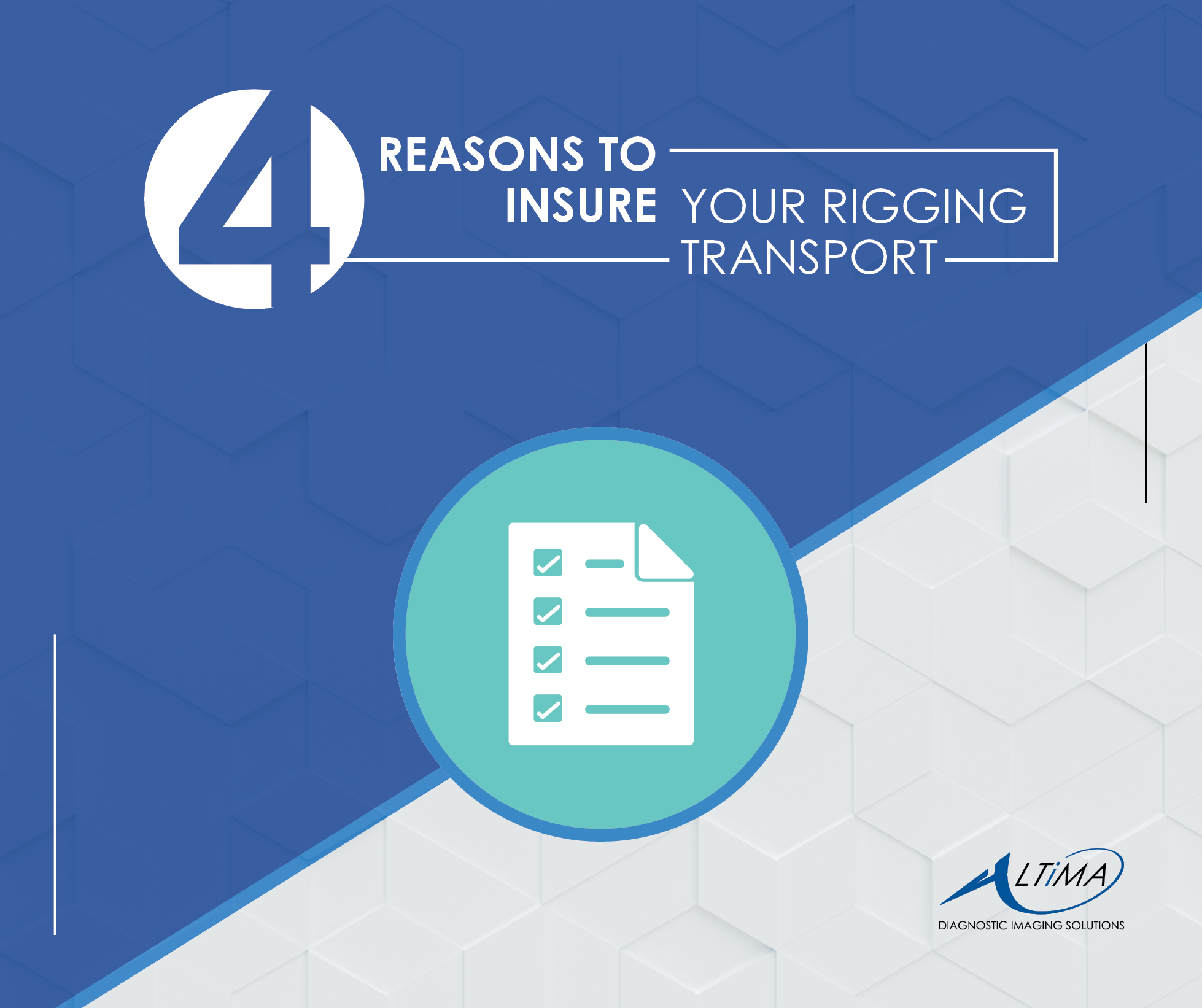4 Reasons To Insure Your MRT/CT Rigging and Transport
The process of rigging and transporting digital imaging equipment is neither simple nor easy. Unlike most business moves, which are a matter of loading cardboard boxes and strapping in furniture, sensitive MRIs and CTs need expert care during load-in, transit and load-out.
Like the best digital imaging equipment companies, Altima knows and trusts its riggers because they have been thoroughly vetted. It should be the same for you, having invested millions of dollars in your machines, which are filled with delicate, fragile and perhaps even hazardous materials. If something goes wrong and your insurance doesn’t cover the transport, you face business downtime, replacement or repair costs, damage to your reputation and perhaps even regulatory fines. Worse, if a move causes your machines to malfunction in practice, you may face litigation.
Purchasing liability insurance to cover your digital imaging equipment against all unforeseen circumstances is the best way to protect your company from unforeseen costs.
These four events pose the biggest threats to the safe transport of your MRIs and CTs.
#1 – Human Error
Even the best transporters don’t have a 100 percent track record of success. Riggers may use worn-out equipment that fails during move-in or move-out, causing sudden jolts to critical machine parts.
As they wheel your machines around, riggers may collide with doorways, corners, parking lot bumpers or even other vehicles. The ruder the shock, the higher the chances for internal damage. Liability insurance is your best protection against mistakes–after all, movers are only human.
# 2 – Overheating and High Humidity
In clinics, CTs are kept in an environment as close to standard room temperature (72º F.) as possible. During transport, the interior temperature of your moving truck should be regulated as well (64–75º F.). If the weather raises or lowers the internal temperature too much, the CT may overheat in operation, damaging the machine and perhaps even releasing toxic materials.
Furthermore, if the humidity inside the truck exceeds 70 percent, excess moisture may create condensation inside the CT, harming the connectors, cables and boards. Your rigger and transporter may recommend climate-controlled transportation for your temperature-sensitive machines, and if they do, accept the extra cost. It will be worth it in the long run to avoid facing expensive cleanup and replacement expenditures down the road.
#3 – Accident During Transport
Speaking of down the road, while your transporter may have superior driving skills, not everyone else on the highway will. Aggressive, impaired or simply incompetent vehicle operators are everywhere, and a road accident is a nightmare scenario facing every imaging company during a move. A truck overturned or even jolted can result in injuries and fatalities, to say nothing of the damage caused to your equipment. It’s critical to check your General Liability coverage and talk to the transporter about additional coverage in catastrophic events.
#4 – Poor Rigging
Substandard moving and rigging materials can result in machine damage in transit, even if everything else went smoothly on the road. Given the delicate and fragile nature of MRI and CT critical parts, gauges and mirrors, ask the transporter to disassemble such parts and pack them separately, labeling them fragile.
As for the packing and transporting of digital imaging equipment itself, the best vendors use specialized crates designed for imaging machines that can absorb minor shocks. Find out if their equipment includes items such as:
- Air casters
- Floating decks
- Poly dollies
- Rol-a-Lift
- Custom blocking and bracing
How to Investigate Your Insurance and Transportation Options
If you are planning to transport your digital MRI systems and/or CT scanners, having the proper liability insurance coverage in case of accidents is essential. If a small or medium-sized practice takes a chance on moving systems without adequate coverage, an unexpected event could bankrupt the company. Remember that your movers’ insurance might not cover all your valuable items completely, so make sure that your General Liability insurance provider does. If you need more coverage, get it.
Clearly, transporting digital imaging equipment is never a carefree task. It’s filled with headache-inducing administrative details. But if you start planning early, get adequate coverage, and hire the best riggers and transporters to assist you, your practice can withstand even the worst-case scenario.
How Altima Can Help
Among the best riggers and transporters, we at Altima, pride ourselves on partnering with moving companies that have an exemplary track record of successful projects. Over the years, we’ve determined the best practices in supervising rigging and transport. Our customers, some of whom do repeat business with us again and again, trust our judgment and breathe easier knowing we’ll work closely with them and their transit company. Altima believes in keeping communications frequent and transparent, and working as honest brokers between customer and transporter.
Experience the Altima Advantage for yourself and give us a call at 972-382-5533 or contact us.




